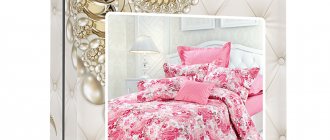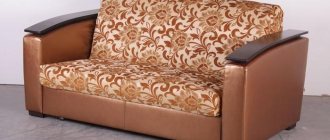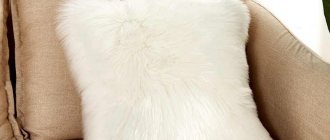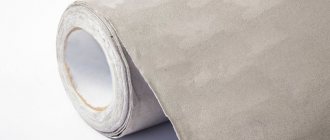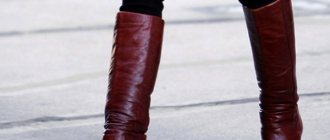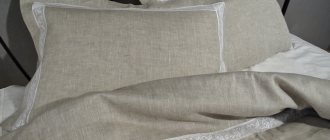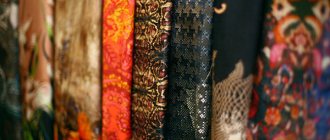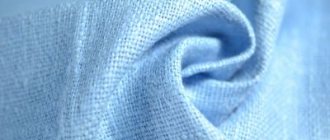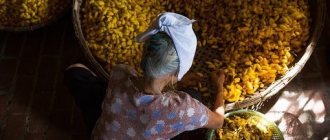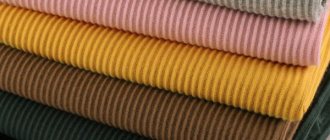Summer is a long-awaited time when you can dress up in light, spacious clothes made of fine fabrics. In the last few years, women's clothing designers have been relying on aesthetic, body-friendly natural materials that provide good heat transfer and allow the skin to breathe. The leading position among them is occupied by linen - an environmentally friendly fabric, unique in appearance and functional characteristics. The fashion for linen is not becoming obsolete, but is only gaining popularity as the “synthetic” trends of the previous century have been replaced by an awareness of the high value of natural beauty, which is emphasized by natural materials. Today I will tell you exactly what advantages linen has and why clothes made from this fabric are recognized as a must-have wardrobe item for the hot season.
History of fabric
The history of flax cultivation has incredibly deep roots, and it is impossible to trace the exact place where flax cultivation began. It is also still impossible to say definitely where the first linen cloth was produced. In many European languages, the word for flax has the same letters in the root, which means that it was grown almost everywhere.
- It is known that in the territory of modern Europe (Switzerland, Germany) flax was grown in the Stone and Bronze Ages - it was used mainly for making ropes and fishing nets.
During the times of Ancient Egypt and the heyday of Middle Eastern civilization, linen fabrics were already produced with the proper level of quality, turning out thin, but very strong and wear-resistant.
Residents of Ancient Rus' - Novgorodians, Suzdalians - also used flax as a raw material for high-quality, durable fabrics. Linen clothing was especially valued for its medicinal properties and symbolized moral purity.
In the Soviet Union, the production of linen was very widespread and was considered a completely ordinary fabric, while in Europe the attitude towards linen was different, where it is considered a “luxury” material. It is known that in modern Russia there are plans to revive the flax industry, a report on this was announced in the legislative bodies.
Let's learn some more interesting things about flax!
How and from what is flax made?
An herbaceous annual plant 30-60 cm high, with narrow alternate leaves and small gray-blue flowers (Flax family, class Dicotyledons, as Wikipedia says) - this is what flax looks like many days before it turns into a stylish thing.
Special varieties of flax are cultivated for the textile industry.
- Fiber flax is grown in Russia (a plant with a tall stem and inflorescence with a small number of branches, ideal for making yarn).
The technology for processing flax to obtain fibers has not changed for many centuries. After the mature plants are harvested, they undergo a long initial preparation for fiber production. At this stage, the flax is soaked, obtaining proto-fiber (trusta), then dried, repeatedly crushed, and fluffed. Then the tattered flax is combed, forming a roving. The result of the first stage is an intermediate raw product - raw flax.
It is pressed into large bales, in which it is sent to the spinning mill. Here, long fiber is produced from the raw material, which ultimately goes to the weaving factory, as well as tow and tow, necessary for the production of various technical products.
Long-fiber flax subsequently becomes a material for creating clothing and linen fabrics. Flax fiber, when cut crosswise, will be shaped like a cylinder, hollow in the middle. Long fibers will consist of 80% cellulose, this structure explains the tactile comfort of flax and its ability to convey a feeling of coolness in hot weather.
On a loom, linen thread is used to produce fabric, which can later be finished - dyed and bleached, or left in its natural form. The natural shade of linen looks very organic in rustic-style looks.
Linen trousers
Such trousers are also acceptable in an office with a relaxed dress code. And this is an excellent choice when you want to tone down the degree of formality.
Photo: locari.jp, shop.mango.com, shopstyle.it
Photo: instagram.com, bodenusa.com, 12storez.com
Linen items are simply irreplaceable in a hot stone city. Flax, flax-blue flower. Light, delicate. And the things made from it are the same.
Let you, in a dress or suit made of linen, feel a little like a cloud, a little like a breeze, a little like a meadow flower))))))
Properties of linen fabrics, their advantages and disadvantages
During the production cycle, durable linen threads are obtained, which are distinguished by a smooth surface (this is due to the specifics of the raw material). Thanks to this interesting feature, the threads are poorly susceptible to dirt and are very easy to wash. Let's figure out what other characteristics, advantages and disadvantages linen fabrics have.
Material of natural origin is especially valued for its natural composition. It can be used to make different models of clothing for all seasons. Linen fabrics have a number of distinctive properties:
- Linen-based fabrics are hygienic: they absorb moisture (hygroscopicity) and allow air to pass through (breathability).
- The tactile comfort of the fabric and antiseptic properties make it suitable for those with sensitive skin and allergy sufferers.
- Linen is easy to work with and care for finished products.
- It is very wear-resistant, after numerous washes it does not lose its properties, but only becomes softer, which makes its use very cost-effective.
- In the cold season, linen warms, and in the summer it gives the skin a feeling of coolness.
- Products made from linen fabrics do not electrify, do not require perfect ironing, and look stylish and impressive.
Among the disadvantages of the fabric are:
- Low thread elasticity, which causes the fabric to wrinkle a lot.
- Significant shrinkage, to avoid which you need to wash and dry the fabric before cutting the parts.
- Shattering along the cut.
Linen shorts
Linen shorts are light and weightless. Combine them with a cotton shirt and crop top, cropped jacket.
Photo: pixiemarket.com, cosstores.com, 12storeez.com
Photo: etsy.com, bedazelive.com, quadrofeminino.com
Appearance: what linen looks like
How can you identify linen fabric by appearance, because it seems so similar to natural cotton? There are many ways to distinguish that this is a flax-based material. You can do this:
Visually . Linen has a characteristic shiny surface, while cotton materials usually have a matte finish.
Tactile . Linen fabric is harsh to the touch, and when in contact with the skin it gives a feeling of slight coolness.
To break . To identify linen in this way, you need to remove one thread from the fabric and tear it. The linen thread will have a sharp tip, while the cotton thread will have a short fluffy tail.
By color. The natural shade of linen is far from one - there are three types of fabrics without dyes, which resemble the shade of ivory, the light brown color of tree bark, as well as a wide range of shades of gray.
Linen shirt
This shirt is perfect for city summer everyday life. It will protect your shoulders from the sun. We combine it with shorts, Bermuda shorts, light skirts, and jeans. Comfort and beauty in one bottle.
Photo: birdonawire-studio.com, modedamour.tumblr.com, pinterest.ru
Photo: pinterest.ru, massimodutti.com, stealthelook.com.br
Composition and types of weave of linen fabrics
Natural linen without the addition of other fibers is in great demand - everyone seems to need a fabric that is 100% environmentally friendly, has an antiseptic effect, and is suitable for a wide variety of sewing tasks. Linen is ideal for many household purposes, making comfortable and durable clothing.
At the same time, since ancient times, flax fiber has been used in combination with others, making it possible to obtain unique fabrics with completely unexpected properties.
Classic, but modern and fashionable combinations are linen + cotton (50/50) and linen + viscose in different percentages. Let's look at them in more detail.
- Semi-len (linen with the addition of cotton) is the name of a material that combines cotton and linen in equal proportions. It is more soft and easy to care for. It combines the properties of both natural fibers. Such fabrics are much more susceptible to dyeing, they are more accessible (obtaining flax is more labor-intensive and financially expensive).
Adding viscose makes linen more drapey and improves the appearance of the fabric.
What other than cotton and viscose? You can also improve creaseable linen using synthetic fibers. They make the fabric more elastic and resistant to creases and wrinkled areas.
Often flax is combined with lavsan; this is an artificial type of fiber, which is introduced into blended compositions at 33-60%. Such fabrics can be ironed well, look like natural linen, yet drape well and do not wrinkle.
UNIQUE CHARACTERISTICS OF LINEN CLOTHES
Linen clothing is a universal element of women's summer wardrobe, which has remained in demand for many centuries. The laconic cut of clothes made from this natural material harmoniously combines with a variety of accessories and other wardrobe items, and a wide range of linen clothing models fits perfectly into the framework of any style and allows you to create not only everyday, but also elegant formal looks.
Linen fits perfectly into office style
Modern linen clothing combines elegance, nobility and stylish appearance and has a lot of unique aesthetic, functional and operational advantages:
Universally suitable for any occasion.
Summer dresses and sundresses, loose blouses and shirts, trendy trousers and shorts, formal suits and jackets - various styles of linen clothing are worn with pleasure all over the world. Linen items can be worn to work, a walk, a business meeting, a date, a beach holiday - they are versatile and look appropriate under any circumstances.
Practical for everyday wear.
Linen clothing fits perfectly into the style and idea of casual. Items made from this material are extremely practical and well suited for everyday wear: they are durable and resistant to repeated washing, do not lose their original color and shape, dry quickly and do not electrify.
Adds a unique natural charm to the color palette.
For a long time, linen clothing was made only in natural, pale gray colors. Nowadays, a rich range of shades of linen products will satisfy the refined taste of even the most fastidious fashionistas. In addition, the special texture of linen gives the color palette a unique natural charm, which looks more advantageous than the artificially rich coloring of clothes made from synthetic materials.
The great advantage of linen products is the relevance of their colors, regardless of seasonal trends. In the case of linen clothing, you can always choose a win-win natural or pastel color that matches your appearance color type.
Linen clothing is made in a rich range of colors
Well suited for changeable weather.
Clothes made from linen are great for hot weather because they are breathable and provide protection from the sun's rays at the same time. Moreover, due to the fact that linen has a rather dense structure, it can be used to sew not only a light dress, but also a windproof jacket. This versatility of the material allows you to create a comfortable summer linen set not only for a warm day, but also for a cool evening.
Combines well with other materials.
Linen items go well with clothes made from other fabrics and form interesting sets. In a romantic summer ensemble, the material looks good with chiffon and silk. Ethnic notes are added to the look by decor in the form of embroidery, fringe, and accessories made from natural materials to match the outfit. An original combination of a linen top with a skirt or trousers made of light wool or leather will make the look more trendy and relaxed. And of course, you shouldn’t ignore the noble combination of linen and denim, which has already become a classic.
Linen clothing is often decorated with ethnic embroidery
Will not lose relevance in subsequent seasons.
Nowadays, natural linen clothing is considered a sign of elegance and good taste. Most often, linen products are distinguished by a laconic cut and have pronounced classic features. Simple styles without elaborate details remain relevant for many years, do not transform from season to season and are not subject to fleeting, constantly updated trends in the fashion world.
Types of weaves
A huge range of types of fabric is made from flax - these are not only clothing and linen materials, but also table cloths (tablecloths and napkins), towel fabrics (textiles for the bathroom and kitchen), decorative fabrics (drapes, etc.), applied and furniture fabrics.
The predominant type of weave for basic linen fabrics is plain, which has been used for these purposes since time immemorial. Finely patterned types of weave (in particular, matting) are also very popular.
Linen fabrics used for bed linen and home textiles are often made with jacquard weave, which uses a pattern with floral, geometric motifs. Fabrics for underwear in most cases have a plain weave.
Linen suit
Linen is not only images for walks and the sea, but also options that are quite suitable for the office. A linen suit is a good investment in your summer wardrobe. We choose a suit with Bermuda shorts and work calmly in the heat.
Photo: miamiere.blogspot.com, pinterest.ru, theimpression.com
Photo: kz.wildberries.ru, shoptiques.com, elleuk.com
Flax Density
There are many options for flax density - this is due to the variety of compositions and purposes of linen fabrics.
The density of standard linen fabrics used for tailoring varies in the range of 130-250 g/m3. Blouse linen is a thin fabric, and it is less dense than dress linen, and suit linen is considered the leader in this indicator among clothing materials.
At the same time, there are varieties of flax for the manufacture of furniture upholstery, technical materials, some of which can have a much higher density, up to 450 g/m3.
When choosing a fabric, please note that the label may contain a plate with care instructions and an indication of the density of the material.
How to work with flax
Like other natural fabrics, linen-based materials need to be pre-decated. To do this, you need to soak the canvas in warm water (for bright and dark colors, the temperature should not exceed 40 degrees). To avoid skewing the fabric, sweep it along the edges with the right side folded inward. Do not resort to drum spinning before sewing the finished product, because after it creases may appear on the surface of the fabric. Dry the fabric thoroughly and iron with a hot iron and steam.
Linen is quite simple to sew, it fits perfectly, the parts are sewn well and can be subjected to WTO without any problems. The only problem that you may encounter when working with smooth and dense linen is fraying of the seams. You can easily deal with this by making the seam allowances a little wider than usual.
Loose linen requires reinforcement with non-woven fabric in places of strategically important seams, for example, at the place where a zipper is sewn in.
What to sew from linen
Linen fabrics, depending on the composition of the fibers, density, texture, can be used for a wide variety of wardrobe items in any season. The purpose of things depends only on what fabric you decide to choose. It is difficult to say what other fabric is as diverse.
Thin and light materials based on or containing flax are ideal for summer. Sundresses, tunics and skirts, linen dresses for plump and slender people are a great solution for a summer wardrobe, regardless of style. They can be reserved and strict, open and relaxed. Such products will decorate not only women, but also girls of any age. Linen for children is a very fertile ground for creativity; this eco-friendly material can be decorated with embroidery.
We provide pictures to understand the variety of models that you can sew with your own hands from thin summer fabrics containing flax.
Thick and smooth natural linen is good for office looks - classic or expressive safari style will fit perfectly into a business dress code, in which blazers and jackets, different styles of trousers, dresses and skirts are appropriate. Stylish men's linen products look very impressive. Shirts, jackets, shorts and trousers can be both the most current and classic.
- A summer dress made of smooth linen is the ideal basis for a formal look.
Loose, heavy linen is well suited for clothing in the boho style - unnecessary dresses, skirts, blouses with “gypsy” specifics do not exist in the wardrobe of fans of this style. Typically, such models look great with handmade lace; they are sewn in different shades.
Beautiful linen models for the summer are especially relevant this season - today, when designers have a special reverence for everything natural, is the best time to include linen products in your wardrobe.
Please note that linen is ideal for loose-fitting garments, but in tight-fitting styles it can give an undesirable stretching effect at the folds, although in general the fabric does not stretch. Choose patterns that take into account this feature of the fabric.
Linen dress
A linen dress is an independent summer item))) Don’t forget to add accessories: a straw hat or a satin scarf; woven sandals or elegant mules; multi-colored beaded chokers or bright earrings.
Photo: zen.yandex.ru, wheretoget.it, anniecloth.com
Robe dresses, shirt dresses, parachute dresses (loose A-line) are in fashion.
Photo: elle.com, whowhatwear.com, graziadaily.co.uk
Caring for linen products
To ensure that products made from linen fabrics last a long time, look neat throughout the entire period of wear, and do not shrink during washing, it is important to follow a few simple rules.
How to wash linen?
When washing colored clothes, it is recommended to use bleaches and powders for white laundry, which give a blue effect. It is better to choose detergents with a delicate, liquid formula and wash at low temperatures, up to 40 degrees.
- Attention! Linen of bright colors is afraid of warm water, wash it at a temperature no higher than 27 degrees, exposure time - no more than 10 minutes.
Clothes made from bleached and undyed linen can be washed in hot water up to 90 degrees.
Important: rinse linen clothes thoroughly to remove any remaining powder/washing gel, which, when oxidized, can cause rapid wear of the fabric fibers.
For linen clothes, a gentle spin mode is recommended - about 600 rpm.
